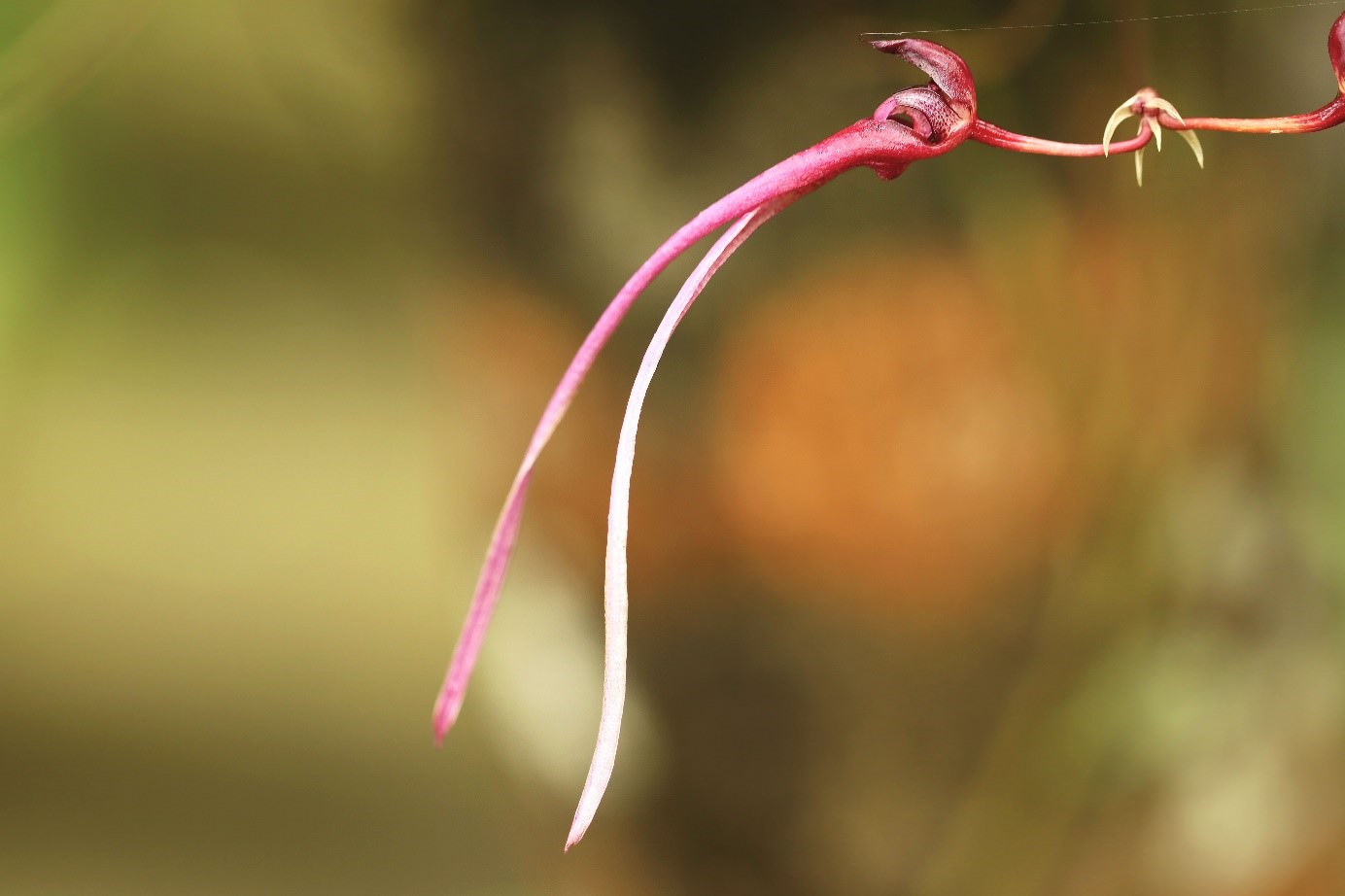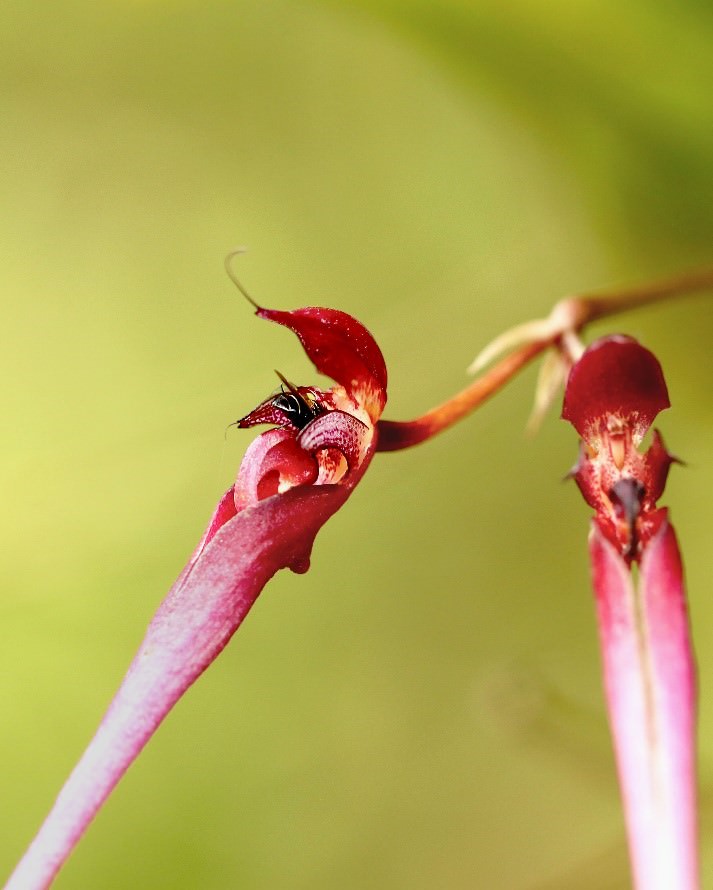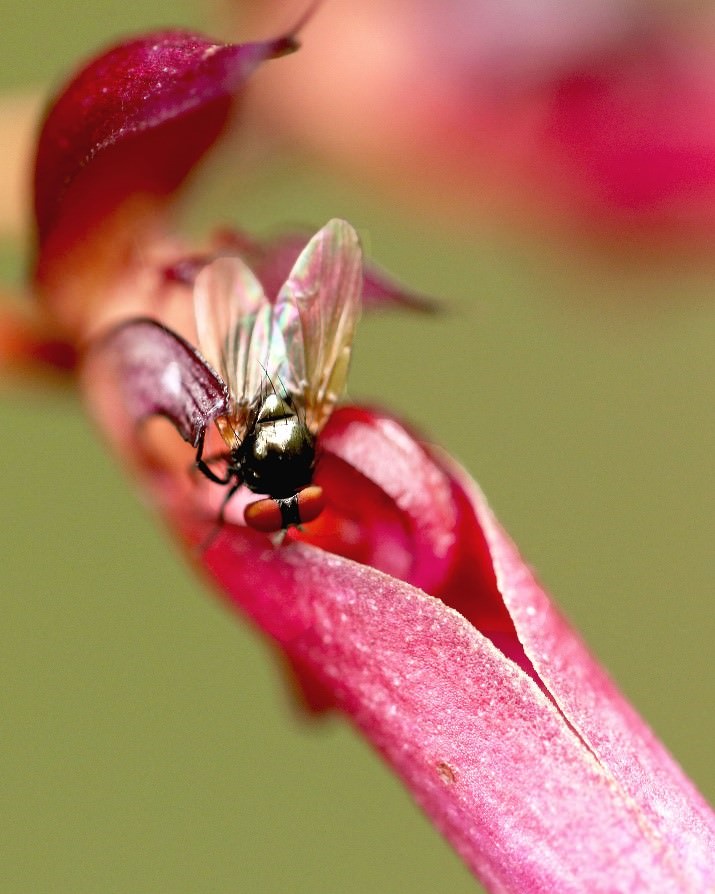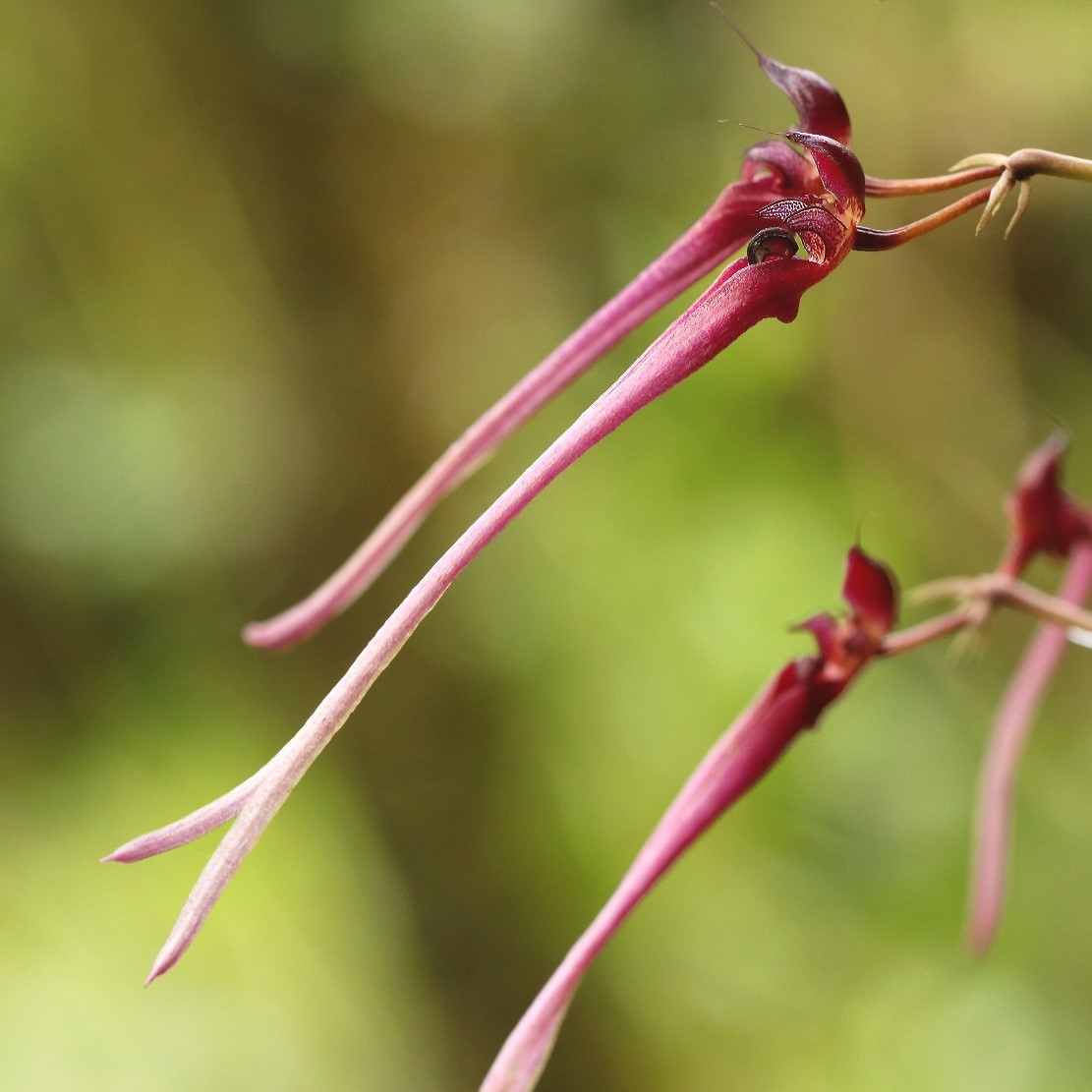On the Scent of Bulbophyllum delitescens

Bulbophyllum is one of the world’s largest genera of flowering plants, with more than 2,000 species found throughout the tropics. It is also the largest genus of orchids in Hong Kong, with 11 recorded species. With large leathery leaves and a stout rhizome that clambers over boulders, B. delitescens is the largest of these local species. However, owing to its rarity, little is known about it.


Although the pollination biology of B. delitescens has never been studied, several related species in the genus are known to attract Dipteran flies as pollinators (Hu et al., 2017). The flowers achieve this by emitting an unpleasant aroma reminiscent of faeces or decaying organic matter, which deceives flies into believing they have found a suitable food source or somewhere to lay their eggs. Sniffing the flowers of B. delitescens reveals a pungent, somewhat fishy smell, almost certainly an indication that this species also attracts flies. Whilst observing the otherwise elegant flowers in full bloom in Orchid Haven this week, a small black fly was seen to alight on the hinged lip and be automatically flipped onto the anther at the centre of the flower - the dastardly mechanism used by other deceptive Bulbophyllum species to coerce inadvertent insects into picking up pollen and transferring it to the stigma of another individual. Could it be that this particular species of fly is responsible for pollinating this orchid throughout its range in tropical Asia?
Reference:
Hu A-Q, Gale SW, Kumar P, Saunders RMK, Sun M, Fischer GA. Preponderance of clonality triggers loss of sex in Bulbophyllum bicolor, an obligately outcrossing epiphytic orchid. Mol Ecol. 2017;00:1–15. https://doi.org/10.1111/mec.14139

